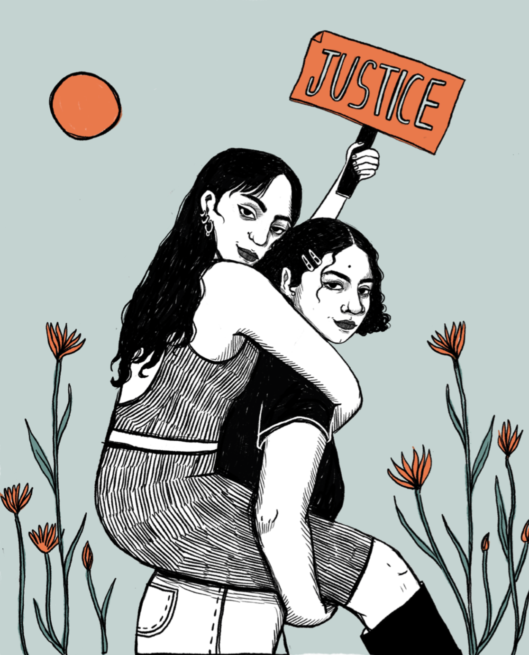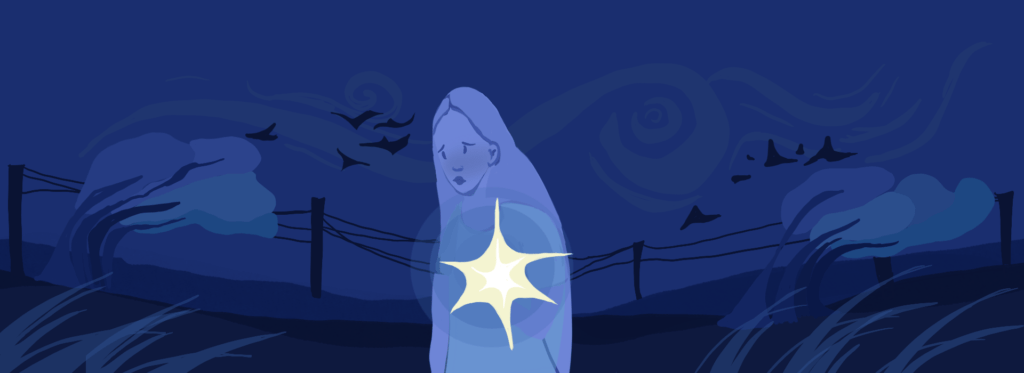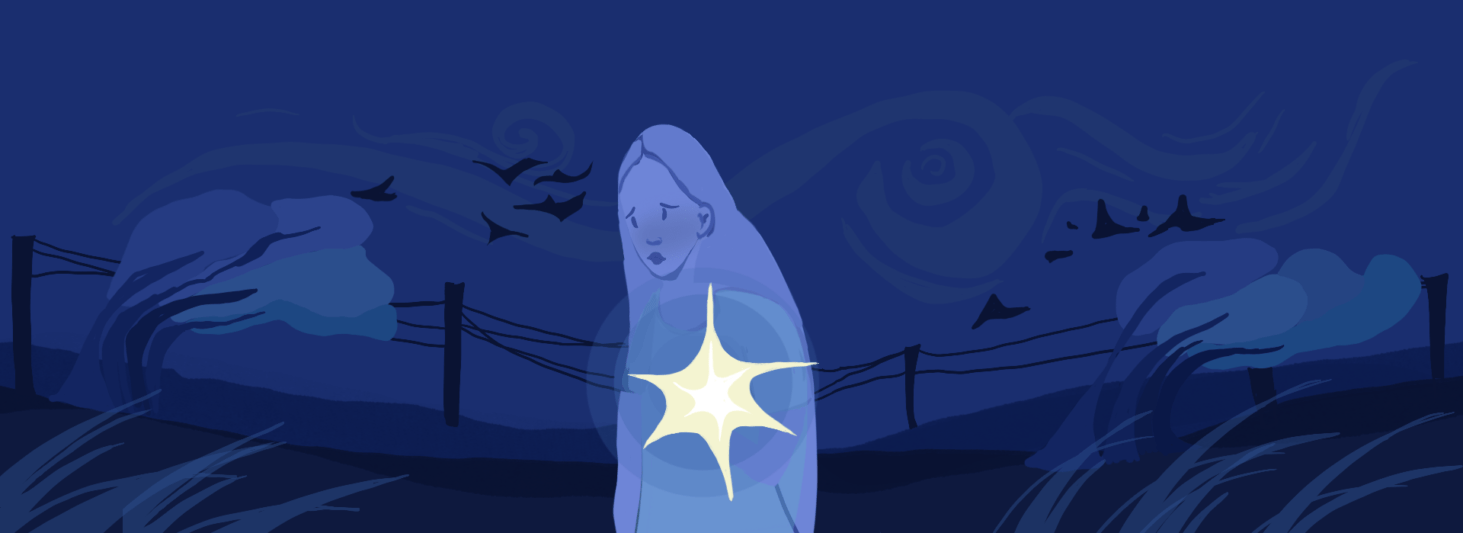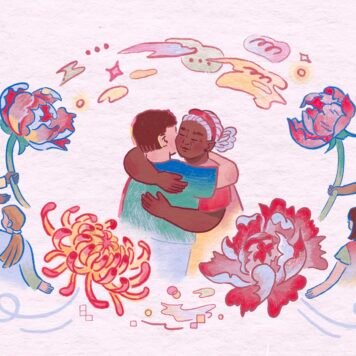One of my earliest memories of the climate crisis is from when I was around six years old. My family and I had been stuck indoors without electricity for days because of a raging storm. When the winds quieted down and we stepped outside, all the large trees I had grown up with had fallen.
I started crying. My parents asked me if I was hurt. “The Earth is hurt,” I replied. I knew something was wrong, yet I did not have the words to describe and understand the pain happening around me.
All I knew was that I was afraid that I would drown in my own bedroom; that a tree would fall on our house; that we would wait for days in the dark.
Around 20 tropical cyclones hit the Philippines and the surrounding region every year, including super-typhoons, where wind speeds reach at least 150 mph. It’s likely to get worse. From an early age, I understood how the aftermath of climate disasters would last long after the storms passed.
How to talk about climate anxiety
When you translate “climate change” into Filipino it becomes pagbabago ng klima or “changing of the climate”. Most Filipinos associate this with changing weather rather than the more complex phenomenon of climate change and the devastating damage it’s causing in the Global South.
My friends and I speak in English to describe our climate anxiety. We find that we’re better able to express our experiences in our coloniser’s tongue.
But using the phrase “I have climate anxiety” falls short of explaining the heavy, aching pain I have in my heart. This language feels distant and diluted. It doesn’t describe the trauma that Filipinos collectively experience.
Still, it is a struggle to figure out what the equivalent term is in Filipino. I think this reflects how we’ve been conditioned not to discuss our own physical and mental well-being.
Make no mistake: those in power, nationally and globally, benefit from our language’s inability to describe the current reality. Our language is a product of this colonisation, the same way the climate crisis is. The Philippines has a long history of colonisation – over 300 years under Spain, around 50 years under the US, and three years under Japan.
Through all those years, revolutionaries were constantly silenced. Words that spoke of liberation, equality, and our rights as a people were banned. Yet we continued to find ways to resist. It started with the propaganda movement – with people telling new stories, with revolutionary newspapers, with books that spoke of an independent Philippines. Workers went on strikes, farmers went on protests, women held secret meetings to spy on the colonisers, and eventually, Filipinos, including fierce women, took up arms and led revolts as guerilla warriors.
When you don’t have the words to talk about the climate and mental health crisis – and the rotting, fossil-fuel-obsessed, profit-oriented system that caused it – it’s harder to expose and change it, but not impossible. It has happened in the past, it will happen again. We can rediscover, reclaim, and find our words, write new stories, and inspire revolutions.
Nakakapagpabagabag, or “anxiety-inducing”, is a Filipino word so rarely used in daily conversations that children often playfully challenge each other to say it as a tongue-twister. The word is often only used seriously by those who are at the brunt of the strongest impacts of the crises we are experiencing.
But nakakapagpabagabag feels right to me – a word that’s heavy, deep and able to represent the climate anxiety and trauma of entire countries and billions of people across the world. It represents the confusion and frustration we feel experiencing climate impacts and witnessing catastrophe, yet seeing the world continue to invest and expand fossil fuels. It represents the fears we have as activists in a country that does not want us to speak up.
Activism branded as terrorism
When I first started my activism in 2017, I thought I knew the risks that came along with it. But I couldn’t predict how difficult it would sometimes be to continue campaigns that felt like they were never enough to catch up to the climate crisis, or the toll that taking part in disaster relief operation after relief operation would take. I didn’t realise how deep the grief would be.
Those on the frontline of the fight for climate justice in the Philippines are tagged as terrorists under the Anti-Terror Law. Those who protest against environmentally destructive projects because their lives depend on it are harassed and even murdered by state forces. Global Witness reports that 270 environmental defenders were killed here between 2012 and 2021.
There have been plenty of times when I’ve wanted to give up, but each time, the communities around me have provided much-needed motivation for me to persist. I recall one of my last conversations with my friend Chad Booc, a volunteer teacher for the Lumad Indigenous schools. He encouraged me to keep going as a full-time activist, even if it wasn’t always so easy.
In February 2023, Chad was murdered along with four other volunteers after being tagged as a terrorist by the government. The Lumad are an Indigenous ethnic group made up of different tribes in the Philippines. They are leaders of the climate justice struggle, and because they resist environmentally destructive projects and stand as a barrier to profit, the state has subjected them to violence. Their schools have been bombed, their land militarised, and their people tagged as subversives. One of Chad’s last Facebook posts before he was killed talked about how, when the Lumad die, “They are not buried, they are planted”, and that when he died, he wished to be planted as well.
The seeds of the revolution are sown and planted. This is why I continue to fight.
Climate education is crucial
Climate education in the Philippines isn’t good enough. When textbooks describe climate change, it is often reduced to melting ice caps and carbon-dioxide emissions, with no discussion of the disasters we are already experiencing as frontline communities.
There’s no exploration of how those already marginalised by intersectional issues of class, gender, race and disability are also the people most affected by the climate crisis. And the curriculum certainly does not extend to the role that the fossil-fuel industry and imperialist countries have played (and continue to play) in causing climate destruction. Without access to information, people are made to believe either that nothing is wrong, or nothing can be changed.

Join our mailing list
Sign up for shado's picks of the week! Dropping in your inbox every Friday, we share news from inside shado + out, plus job listings, event recommendations and actions ✊
Sign up for shado's picks of the week! Dropping in your inbox every Friday, we share news from inside shado + out, plus job listings, event recommendations and actions ✊
With how much climate change is hurting the Philippines, we expect our leaders to do something about it. Yet they are doing the opposite.
As inflation rises and the working-class wage depreciates, we’re witnessing President Marcos Jr. approving the country’s first sovereign wealth fund instead of addressing the more urgent needs of people affected by the climate catastrophe. The president presents himself as a climate leader while at the same time actively encouraging environmentally destructive projects and expanding fossil-fuel infrastructure.
Education around climate science, socio-economic injustice, and Filipino people’s historical resistance is crucial. Awakened, people can fight back.
When super-typhoons batter our communities, I’m still afraid; I still cry.
There are times when I want to give up, but I know that the sustainable, equitable future we’re fighting for already exists, in small pockets. I’ve seen it in the communities I fight alongside, in international gatherings of climate justice activists, in small farming cooperatives, in the care that activists have for one another. It exists but it’s being attacked, so we must defend it, and we can’t let it go. We must build our power.
Thank you to my friends and community, Gabes Torres, Maria Veloso, Reef Liggayu, Whitney Bauck, Issa Barte, Chloe Chotrani, Tabitha Yong, Dear Meg, Lolo Amistad, Aizel Lim, Line Niedeggen, and Mitsuo Iwamoto for holding space for conversations that helped form a deeper understanding of anxiety, bagabag, and this point of view.
What can you do?
Accounts to follow:
- Katribu Youth (@katribu_natl)
- Pamalakaya-Pilipinas (@pama_pil)
- SAKA #joinSAKA (@saka__ph)
- KERI (@keriforactivists)
- Anakbayan UK (@anakbayanuk)
- International League of People’s Struggle United Kingdom (@ilps.uk)
- gabes torres (@gabestorres)
- Chloe (@bodyas.earth)
- Fossil Fuel Non-Proliferation Treaty Initiative (@fossilfueltreaty)
- MAPA (@fridaysforfuturemapa)
- Fridays For Future (@fridaysforfuture)
- YACAP – Fridays for Future PH (@yacaphilippines)
- Climate Vanguard (@climatevanguard)
- WeSmellGas (@wesmellgas)
Resources:
- It’s Not Just You by Tori Tsui
- It’s Not That Radical by Mikaela Loach
- Hope in the Dark by Rebecca Solnit
- Braiding Sweetgrass by Robin Wall Kimmerer
- Emergent Strategy by Adrienne Maree Brown
- Read more of my work on shado HERE




